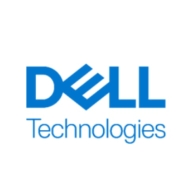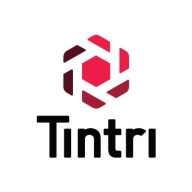


Tintri VMstore T7000 and Dell PowerStore are leading storage solutions. Dell PowerStore gains the upper hand due to its advanced features, but Tintri VMstore T7000 is considered cost-effective and easier to operate.
Features: Tintri VMstore T7000 is praised for its predictive analytics, responsive support, and user-friendly interface. Dell PowerStore stands out with its adaptive architecture, extensive scalability, and flexibility for different workloads.
Room for Improvement: Tintri VMstore T7000 could benefit from enhanced integration options, improved cloud capabilities, and better management features. Dell PowerStore needs a more intuitive management interface, better documentation, and streamlined setup processes.
Ease of Deployment and Customer Service: Tintri VMstore T7000 is noted for its straightforward deployment and excellent customer service, with quick setup and responsive support. Dell PowerStore offers a smooth deployment but can be more complex, requiring detailed documentation. Both provide effective customer support, with Tintri's ease of deployment being preferred by users.
Pricing and ROI: Tintri VMstore T7000 is considered cost-effective with a good return on investment due to its lower initial setup cost and minimal maintenance expenses. Dell PowerStore, though more expensive, is seen as worth the investment because of its comprehensive features and long-term reliability. Users on a budget might lean towards Tintri, while those prioritizing advanced functionalities may find better value in Dell PowerStore.
If you wait more than seven years to buy another one, you get a return on your investment.
If you purchase storage with 300 terabytes, you can easily achieve one petabyte of effective capacity.
It's been trouble-free the entire time, with very high performance, as it has been designed and built properly.
We have seen a return on our investment in Dell PowerStore; definitely our cost per terabyte has been very good compared to some of the other vendors that we would have been using previously, and our performance benchmarks have exceeded what we were expecting.
I accidentally had a volume or VMstore running up to 95%, but it was no issue. The performance was still top-notch despite being used over 90%.
Customers always have their issues resolved promptly.
Technical support is good at least through vendors, not directly with the principal.
I would rate the technical support of Dell PowerStore between nine and ten out of ten.
They're responsive, knowledgeable, and have a quick turnaround.
On a scale of one to ten, I would rate Dell support as a ten, focusing on that aspect alone, because it's what allows me to sleep at night.
Their support team provides excellent assistance and effectively addresses issues.
The response time is very prompt.
It is highly scalable.
It hasn't broken down anytime in the last six to seven years, despite hurricanes, earthquakes, and power outages.
The solution's scalability is a ten out of ten.
It scales up and scales out both ways, and as our data keeps growing, it is very easy to just keep attaching and keep growing.
Scaling up can be done from a single enclosure that already has two controllers to a maximum of four storage units with up to eight controllers, and a massive amount of storage can be added.
You do not need to purchase fully populated or maxed-out boxes on day one; instead, you can start with half-populated boxes and expand as your needs grow, adding disks as necessary.
Five are running in production, three are in the DR site, and one is in the bunker site.
I would rate the stability of the product at seven out of ten.
When I removed all the cables, it failed over within five minutes.
It's quite stable and reliable in general.
There are no bugs or glitches and it doesn't crash or freeze.
A new controller was shipped and arrived the next day.
In the last year, we have not experienced any downtime in Tintri VMstore T7000.
We would appreciate a built-in transparent failover in the next release to eliminate the need for a separate metro cluster.
One way to improve the product is to add an operational assistant that doesn't depend on VMware.
I would like to see some AI features that would allow arrays to intelligently identify threats or unusual behavior in the data pattern and give an alert.
Something needs to be done with the caching to ensure that if some issue occurs, there needs to be an ability to disable caching during maintenance to make it static, safe, and good.
Pricing must also be considered, as Dell PowerStore is quite expensive compared to competitors in the market like HPE Alletra, Huawei Dorado, or Hitachi storage, for example.
The main reason why people move to Pure Storage is because it's simplified.
Tintri could improve by ensuring shorter times for support and compatibility when there are new releases from partners like VMware or Microsoft.
Maybe some sort of spreadsheet or visual tool would help. It could show the amount of data and servers we have, guide us on which particular build to choose, and estimate costs.
It is very expensive as an appliance compared to other storages such as Huawei or Dell storage.
While the prices may be higher than those of other vendors, we see it as a market leader with benefits.
The support can be a bit pricey, but the solution is more cost-effective than anything else out there.
I would rate the solution as an eight out of ten in terms of costliness.
Likely the cost is $400,000 whereas IBM may be $250,000.
Based on my experience, the cost of Dell PowerStore for around 500 GB of capacity is very competitive compared to any other platform in the market.
I asked for a new quotation on a server, and it is quite expensive; it is really expensive.
While it might seem expensive per gigabyte initially, the practical capacity and the reduced need for additional backup and storage personnel make it fairly priced.
Tintri VMstore T7000 appliance itself is very expensive.
Its data compression feature is the best that we have ever seen.
The standout features for us in Pure FlashArray X NVMe are its robust DDoS protection, seamless transparent failover, and failback capabilities ensuring high availability.
Pure FlashArray X NVMe helps to improve our processing speed.
This includes storage sharing, adding servers to the service, and the wireless host connection on the network side.
Dell PowerStore offers good integration capabilities, especially since it helps with backup, which is an important aspect.
In terms of whether my company could reduce the power consumption with Dell PowerStore, I would say that my company had a use case with a customer around three weeks ago where their old Dell EMC VNX Storage System used to draw about 2500 watts compared to Dell PowerStore which drew about 800 watts, which is a really a big saving looking at the twenty-four hours and seven days of usage of the system.
It is hands-off and runs seamlessly without needing daily management.
I have eliminated bottlenecks with storage and have a more secure storage platform using unwritable snapshots.
The major benefit of using Tintri VMstore T7000 is its deduplication and compression ratio, which is around 4x to 5x. No other storage is giving that much ratio.
| Product | Market Share (%) |
|---|---|
| Dell PowerStore | 14.7% |
| Pure FlashArray X NVMe | 1.4% |
| Tintri VMstore T7000 | 0.8% |
| Other | 83.1% |


| Company Size | Count |
|---|---|
| Small Business | 15 |
| Midsize Enterprise | 11 |
| Large Enterprise | 12 |
| Company Size | Count |
|---|---|
| Small Business | 49 |
| Midsize Enterprise | 33 |
| Large Enterprise | 74 |
| Company Size | Count |
|---|---|
| Small Business | 23 |
| Midsize Enterprise | 27 |
| Large Enterprise | 19 |
Pure Storage FlashArray//X is the world’s first enterprise-class, all-NVMe flash storage array. It represents a new class of storage – shared accelerated storage, which is a term coined by Gartner – that delivers major breakthroughs in performance, simplicity, and consolidation.
Dell PowerStore is a scalable, high-performance platform supporting both modern and traditional workloads, enhancing IT operations with AI-driven automation and advanced data reduction features.
Designed for flexibility, Dell PowerStore integrates seamlessly with VMware, providing robust security and high IOPS. Users benefit from fast NVMe storage, intelligent data management, and scalable performance to handle diverse workload demands. However, improvements are needed in replication, enterprise functionalities, and UI complexity. Stability and support issues highlight the need for enhanced monitoring and pricing strategies.
What are the key features of Dell PowerStore?
What benefits does Dell PowerStore offer?
In industries like finance, healthcare, and IT, Dell PowerStore is critical for VMware virtualization, high-performance databases, and backup storage. It supports hosting virtual machines, mirroring storage, and handling SAP and Oracle databases effectively. Its role in hybrid and on-premises setups showcases its adaptability and integration capabilities for mission-critical tasks.
For over 10 years, Tintri has been unburdening IT teams of tedious, manual data management with the most advanced, AI-enabled solution on the market. With a commitment to ongoing R&D, Tintri delivers an infrastructure solution built for today’s future-ready, integrated operations from the ground up. We are redefining what data management and analytics look like for today’s dynamic workloads.
Tintri VMstore Adds Feature That No Other Platform Offers
The Tintri VMstore T7000 Series is the latest addition to the storage industry’s only true Intelligent Infrastructure portfolio. The T7000 delivers NVMe driven performance and efficiencies, supporting up to 7,500 virtualized applications in just two rack units. It offers the kind of scalability, availability and security that you’d expect from an enterprise-grade system that powers numerous Fortune 100 firms. Our customers love the outstanding AI-driven efficiency and optimizations that set VMstore apart from traditional approaches. VMstore systems deploy in minutes, self-optimize and dynamically adapt to accommodate the most demanding workloads in the data center maintaining quality of service (Auto-QoS) for each Virtual Machine (VM). Autonomous operations and advanced real-time and predictive analytics consistently drive down storage management activities and costs – by as much as 95%.
Tintri VMstore T7000 – NVMe Platform Datasheet
Tintri VMstore simplifies and automates storage management, delivering real-time analytics, and maximizing performance so you can refocus your efforts on high-impact projects and business innovation.
We monitor all All-Flash Storage reviews to prevent fraudulent reviews and keep review quality high. We do not post reviews by company employees or direct competitors. We validate each review for authenticity via cross-reference with LinkedIn, and personal follow-up with the reviewer when necessary.